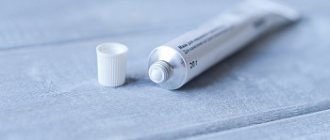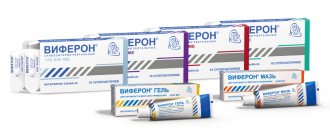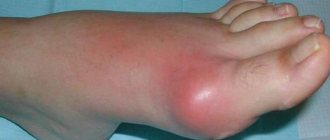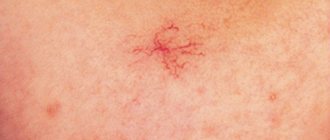Allergies are called systemic (from the body as a whole) or local (from any organ or area, for example, on the skin) painfully heightened sensitivity to certain substances or groups of substances. Such substances that cause an allergic reaction are called allergens.
The modern world, in a number of ways, no longer corresponds at all to the natural environment for humans. Such factors include air polluted to the point of toxicity, especially urban air; increased background radiation; powerful electromagnetic fields; self-destructive habits, including smoking, drinking alcohol or drugs, incl. pregnant women; unhealthy, genetically modified and/or imported food from other parts of the world; and especially the products of the chemical industry, which constitute (along with electricity) the basis of the existence of modern human society. Therefore, there is nothing surprising in the pandemic spread of a number of diseases that were previously extremely rare or completely unknown.
The prevalence of allergic reactions is practically impossible to account for statistically. Apparently, in developed countries, any person at least once during his life experiences certain allergy symptoms, including in the eyes and surrounding tissues. And if earlier allergies were called “the disease of the century,” now it is much more often considered as an immanent (internal) payment for civilization as such.
Causes of allergies and types of rashes
There are many causes of allergies, the main ones being:
- food products (chicken protein, fish, seafood, cow's milk, citrus fruits, chocolate, nuts and many others);
- chemical detergents and cleaners;
- medications;
- household dust;
- pets (their fur, fluff, saliva);
- insect bites;
- helminth infestations (parasitic worms provoke allergic reactions in humans);
- environmental factors - cold, frost, sun;
- physical procedures associated with current (the cause of a rare form of allergy to physical activity and current).
Allergies often manifest themselves in the form of red, scaly spots that can be located on any part of the body surface.
Main types of rashes:
- Urticaria: rashes in the form of blisters, often multiple, can be located on any part of the body. Accompanied by redness, itching, local swelling. They usually go away within a day. Quincke's edema (swelling of the deep layers of the dermis and subcutaneous fatty tissue) of the upper respiratory tract often develops along with urticaria.
- Atopic dermatitis: The rash in adults is usually localized on the flexor surfaces of the arms and legs, on the back of the neck and behind the ears. The lesions are accompanied by redness, itching, and crust formation.
- Contact dermatitis: the cause is direct contact of the allergen with the skin, therefore it mainly occurs on the hands. The affected area exhibits hyperemia, weeping, swelling, and itching.
- Eczema can be localized on any part of the body, but most often it is the face and hands. It presents as hyperemic areas of the skin with severe swelling and multiple blisters.
Causes of oil intolerance
There are a huge number of oils, and they all differ in their individual composition. Most products contain fatty acids and vitamins; butter also contains milk protein. If a person is diagnosed with an allergy to oil, the doctor’s first task is to determine the causes that provoked the pathology. Almost any component included in the product can cause an allergic reaction. Moreover, in most cases, hypersensitivity extends to several types of oils and other substances containing a specific allergen. So, with intolerance to fatty acids, a person develops an allergy to butter, beeswax, and peanut butter. If we are talking about hypersensitivity to milk proteins, the body shows an abnormal reaction not only to butter, but also to other dairy products.
Often, an allergy to oil is caused by a hereditary predisposition. In this case, the child is born with a congenital disease, the mechanisms of which are embedded in his genes. The tendency to allergic manifestations is not always passed on from parents to children. Even if grandparents and other family members suffer from the pathology, it is likely that the child will develop it.
Rules for using hormonal ointments:
- Before use, be sure to consult your doctor. All drugs have contraindications and restrictions for use.
- Follow the dosage and frequency of application exactly. If exceeded, adverse reactions quickly develop
- Use hormonal ointments if necessary. There are safer means.
- Possible side effects from hormonal ointments, especially with long-term use - skin atrophy, the appearance of pustules against the background of reduced immunity, increased blood glucose, decreased adrenal gland performance, stretch marks, baldness, fungal infection. If they appear, consult your doctor immediately.
- Avoid contact with eyes and other mucous membranes. Rinse with plenty of water and if discomfort persists, visit a doctor.
- When applying, lubricate only the affected area, avoiding healthy skin. Otherwise, the opposite effect is possible in the form of skin redness and swelling.
- .The ointment requires gradual withdrawal. Do not suddenly stop using it - side effects and worsening of the underlying disease are possible.
Desensitization
This is the name of the procedure that helps get rid of allergy symptoms if it is impossible to stop the drug. This happens with life-saving essential drugs.
The essence of the method is to gradually increase the dose from the minimum to the required for treatment. At the same time, reactions similar to those observed during allergy vaccination occur in the body. Desensitization techniques exist and are used for insulin, antibiotics and aspirin.
Effective diagnosis and treatment of drug allergies in the multifunctional CELT clinic. New treatment methods, qualified allergists, modern equipment - with CELT specialists it is easy to maintain your health.
Make an appointment through the application or by calling +7 +7 We work every day:
- Monday—Friday: 8.00—20.00
- Saturday: 8.00–18.00
- Sunday is a day off
The nearest metro and MCC stations to the clinic:
- Highway of Enthusiasts or Perovo
- Partisan
- Enthusiast Highway
Driving directions
Non-hormonal ointments
Non-hormonal ointments for adults for skin allergies have a mild, gentle effect; there is no systemic effect on the body.
Non-hormonal drugs will not cope with severe and chronic types of allergic dermatoses.
Psilo-balm (diphenhydramine)
Apply 2-3 g to the affected areas 3-4 times a day. Action: antihistamine, antipruritic, local anesthetic, cooling.
Indications: itching and irritation of the skin due to allergic dermatitis, insect bites.
During pregnancy: allowed as prescribed by a doctor. Use during lactation is undesirable.
Average price: 267 rub.
Fenistil (dimetindene)
Application: topically 2-4 times a day. After applying to large areas, avoid direct sunlight. Action: antipruritic, antiallergic, decongestant, antihistamine.
Indications: skin itching due to allergic dermatoses, insect bites.
Pregnancy: 1st trimester – permissible as prescribed by a doctor. II-III trimesters and lactation period - do not use for the treatment of extensive foci of allergies.
Average price: 362 rub.
Protopic (tacrolimus)
Treatment begins with 0.1% ointment, which is applied 2 times a day. If improvement occurs, you can reduce the frequency of application or switch to a 0.03% ointment dosage. Suitable for both short-term and long-term use. Can be used on the face, except eyes and mucous membranes.
Action: anti-inflammatory.
Indications: atopic dermatitis (moderate and severe forms) when other ointments against allergies are ineffective.
Pregnancy: contraindicated.
Average price: 678 rub.
Soventol (bamipin)
Apply a thin layer to the affected area; re-application is possible after 30 minutes.
Action: antipruritic, antiallergic.
Indications: allergic itching (urticaria, insect bites, eczema and other allergic skin manifestations), minor burns and frostbite.
Pregnancy and lactation: with caution.
Average price: 1010 rub.
Elidel (pimecrolimus)
Application: 2 times a day with an interval of 12 hours. Suitable for long-term use. Can be applied to the face, except eyes and mucous membranes.
Action: anti-inflammatory.
Indications: atopic dermatitis.
Pregnancy: with caution.
Average price: 986 rub.
Zinc ointment (zinc oxide)
Application 2-3 times a day. Can be applied to the face except eyes.
Action: anti-inflammatory, disinfecting, drying.
Indications: allergic dermatitis and eczema.
Pregnancy: no restrictions.
Average price: 36 rub.
Hormonal drugs
Most effective for treating allergic red spots.
They are divided into 4 classes.
| Class | Effect | Drugs |
| I | They have a short-term effect and slowly penetrate the skin. | "Hydrocortisone" |
| II | They have a moderate effect on inflammatory skin processes, the effect is also quite slow. | "Prednisolone", "Desoxymethasone", "Lorinden", "Afloderm" |
| III | Quickly and effectively relieve inflammation, itching, and irritation. | "Elokom", "Celestoderm", "Sinaflamm", "Apulein" |
| IV | They penetrate deeply and quickly into cells and have a powerful anti-inflammatory and anti-allergic effect. | "Galcinonide", "Dermovate" |
Despite their high effectiveness, hormonal drugs can cause serious side effects, especially with long-term treatment.
Hormonal ointments rarely cause systemic complications such as diabetes, weight gain, and menstrual irregularities. This is possible either with increased sensitivity to the drug, or with a significant excess of the daily dosage. Most often, complications are local in nature and are manifested by fungal infection of the area where the ointment is applied.
Victoria Druzhikina
Neurologist, Therapist
Most hormonal ointments have a very similar mechanism of action and main indications, so you can combine them:
- Action: anti-inflammatory, antipruritic, antiallergic, decongestant.
- Indications: eczema, neurodermatitis, atopic dermatitis and other allergic dermatitis.
- Pregnancy and lactation: use only when absolutely necessary as prescribed by a doctor for short-term courses. During lactation, do not apply to the mammary glands.
Hydrocortisone
Quickly helps relieve itching and swelling. Penetrates deep into tissues and, with prolonged use, has a systemic effect. The effect lasts no more than 4 hours, so it requires 2-3 applications. Price – 35 rubles.
Prednisolone
Antiallergic, antipruritic, anti-inflammatory effect occurs quickly, works longer - up to 8 hours, applied 1-2, less than 3 times a day for 1-2 weeks. With prolonged use, skin atrophy is possible. Price - 30 rubles.
Elokom
The drug is based on mometasone. Apply 1 r/day. Helps with dermatitis and insect bites. The ointment is greasy and stains clothes. Price – 80 rubles
Elokom-S
In addition to mometasone, the composition includes salicylic acid, which dissolves rough scales, softening and cleansing the skin during peeling. Used 2 times a day for atopic, seborrheic dermatitis, psoriasis. The drug cannot be used for herpetic rashes and pustular lesions. Price – 780 rubles.
Advantan
Methylprednisolone drug. Wide spectrum of action. It helps well with insect bites, can be used in children from 4 months. Apply 1 time per day. The duration of use of the ointment is limited to 12 weeks in adults and 4 weeks in children. Price – 500 rubles.
Celestoderm
Active ingredient: betamethasone. It is used in pediatrics from 6 months, but produces side effects such as increased intracranial pressure, increased blood sugar, and adrenal suppression. Duration of use 1-3 times a day, lightly rubbing, duration of treatment up to 4 weeks. Price – 250 rubles.
Doctor's advice
If an allergy occurs, first of all you need to avoid contact with the allergen. Not only cream or ointment is important in treatment, but also following a hypoallergenic diet. Nuts, citruses, chocolate, chicken, cheese, eggs, fish, as well as all yellow, orange or red foods (carrots, beets, tomatoes, yellow apples and pears, watermelons, etc.) are excluded from the diet. This is done regardless of whether you have food intolerances or not. The above products help increase the level of histamine in the blood. Histamine is a chemical that triggers and maintains an allergic reaction. Therefore, it is important to follow a diet for 5-7 days, but if the process continues, then continue to limit your diet. For long-term eczema and dermatitis, each product is introduced gradually, separately from the others, and possible skin reactions are monitored.
Victoria Druzhikina Neurologist, Therapist
Lorinden-S
In addition to the hormone, Flumethasone contains the antiseptic clioquinol, which has an antimicrobial effect, so use is possible for impetigo, infectious dermatitis, as well as when a bacterial infection is associated with another type of dermatitis. Approved for use in pregnant women. Not for skin cancer. Price – 435 rubles.
Sinaflan
Fluocinolone contains acetonide. It also has an anti-edematous, drying effect. No more than 3 times a day; if improvement occurs, reduce the number of applications to 1-2 times a day. The duration of treatment is no more than 2 weeks. For hyperkeratosis, the ointment is used with an occlusive dressing once a day or twice for no more than 1 week. Price – 70 rubles.
Who is at risk
An allergy to oil can occur at any age, and it is quite difficult to prevent its development. However, in some cases the risk of pathology increases significantly.
- Pregnancy. Often, with the onset of pregnancy, the body begins to react violently to various stimuli to which it was previously neutral. This is caused by sudden hormonal changes and decreased immunity.
- Age up to 3 years. In children, the immune system is weak and unstable, which often causes the development of its pathologies. If an allergy to oil occurs at such an early age, it often begins to disappear as they grow older, and by the school period it ceases to bother the child.
- Heredity. If at least one of the spouses suffers from allergies, there is a high probability of transmitting this pathology to the child at the genetic level. If both parents have the disease, the risk of its development in the baby increases significantly. However, the mother and father do not necessarily have to be diagnosed with an allergy to oil. Pathology often develops even if the parents suffer from another form of allergy (food, sun, etc.).
- Tendency to allergic manifestations. People who suffer from allergies to pollen, animal dander, and various types of food allergies are at high risk of developing oil intolerance. The reason for this lies in the disruption of the functional processes of the immune system.
- Atopic dermatitis. The disease is characterized by a chronic course and is transmitted by heredity. With atopic dermatitis, frequent skin reactions to various exogenous and endogenous irritants are observed. Oil is one of the most aggressive allergens, especially when it comes to essential oils. Therefore, allergies to oil in people with atopic dermatitis are quite common.
Comparison table of ointments
| Name of ointment | Application | Additional effect | Average price (RUB) |
| "Hydrocortisone | For lesions 1-3 times per day. | 32 | |
| "Prednisolone" | 1-3 times a day, course 8-14 days. | 27 | |
| "Elocom" (mometasone) | 1 time per day, the duration of treatment is individual and determined by the doctor. | Good for itching and irritation of the skin. | 370 |
| "Elocom-S" (+ salicylic acid) | 2 times a day, daily dose no more than 15 g. | Gives a keratolytic effect. Helps with allergic dermatitis accompanied by hyperkeratosis (atopic dermatitis, seborrheic dermatitis). Hyperkeratosis is an excessive division of epidermal cells with impaired desquamation, leading to thickening of the skin. | 663 |
| Advantan (methylprednisolone) | 1 r/d. The duration of use should not exceed 12 weeks, and when using an emulsion - 2 weeks. | 550 | |
| "Celestoderm" (betamethasone) | Lightly rubbing 1-3 times a day, treatment duration up to 4 weeks. | 232 | |
| "Lorinden-S" (flumethasone, clioquinol) | No more than 3 times a day; if improvement occurs, reduce the number of applications to 1-2 times a day. The duration of treatment is no more than 2 weeks. For hyperkeratosis, the ointment is used with an occlusive dressing once a day or twice for no more than 1 week. | Plus antimicrobial and antifungal effect. Used for allergic dermatoses with associated bacterial or fungal infection. | 376 |
Complications of allergies in children
In the absence of competent measures, diseases and conditions that are difficult to treat may develop. Many of them significantly worsen the child’s health, reduce his quality of life and often lead to disability, these are:
- Chronic rhinitis.
- Persistent headaches.
- Deterioration of memory and concentration.
- Autoimmune disorders.
- Bronchial asthma, anaphylactic shock or asphyxia.
Allergies in children of any age require timely contact with a qualified specialist and constant monitoring. Only an experienced pediatric allergist can prescribe adequate treatment and provide competent medical supervision.
Ointments for allergies on the face, including the eye area
| Application | Indications | Average price (RUB) | |
| "Dex-gentamicin" (dexamethasone, gentamicin) | A small amount is placed in the conjunctival sac 1 to 4 times a day. If improvement occurs, gradually reduce the frequency to 1 per day. | Inflammatory eye diseases | 142 |
| "Hydrocortisone" | Injected directly from the tube into the conjunctival sac 1-3 times a day. | Allergic conjunctivitis | 16 |
In some cases, doctors prescribe ointments such as Advantan, Celestoderm-B, and Lorinden-S for allergies on the skin of the face and eye area. These drugs are applied to the eyelids and around the eyes, avoiding contact with the conjunctiva. They should be used very carefully, in short courses, strictly under the supervision of a doctor (the development of glaucoma is possible).
Non-hormonal allergy medications for use on the face (except eyes) include Zinc Ointment, Elidel, and Protopic.
general information
Oil allergy is a common pathology that significantly impairs a person’s quality of life. Oils are used for cooking, cosmetic and therapeutic purposes. There are natural vegetable oils and synthetic products, and all of them are actively used for various household purposes. In case of allergies, the body perceives the oil as a dangerous substance, so it begins to produce antibodies against its components. A person develops acute intolerance to this product. When even a small amount of oil enters the body orally or through the skin, inflammatory processes begin to occur in the body, falsely signaling the presence of an infection or other foreign body in the blood. The mechanism for the development of an allergic reaction lies in the functioning of the immune system.
Vinikli nutrition - consult a doctor
To make an appointment for a consultation, call or fill out the return form:
(050) 301-99-26 (067) 446-11-79
Damn,
Your request has been successfully sent!
A call center specialist will contact you as soon as possible to clarify all the details.
An immune system that is too weak or unstable can easily malfunction and become hypersensitive to any irritants. As a rule, an allergy to oil occurs in infancy, when the body's defense mechanisms are not yet sufficiently formed.
Products suitable for pregnant women
There are quite a few ointments for skin allergies allowed during pregnancy. For most drugs, the instructions indicate that it should be used with caution, only as prescribed by a doctor, and some drugs are completely contraindicated.
But there are drugs that are absolutely safe to use for a baby:
- “Zinc paste” - described above.
- “Bepanten”, “Solcoseryl”, “Panthenol” - do not have a direct anti-allergic effect, but have a regenerating, softening, moisturizing and anti-inflammatory effect.
Here is not a complete list of ointments against skin allergies, but only some popular representatives. It is not recommended to prescribe such medications on your own, especially if you are experiencing the disease for the first time. Only a doctor, after a full examination, will be able to prescribe a full treatment, which will include, among other things, local therapy.
If you still have questions, ask your allergist-immunologist.
This article has been verified by a current qualified physician, Victoria Druzhikina, and can be considered a reliable source of information for site users.
Bibliography
1. https://www.rosminzdrav.ru/documents/9159-poryadok-okazaniya-meditsinskoy-pomoschi-naseleniyu-po-profilyu-allergologiya-i-immunologiya-utv-prikazom-ministerstva-zdravoohraneniya-rossiyskoy-federatsii-ot- 7-noyabrya-2012-g-606n
Rate how helpful this article was
4.6 52 people voted, average rating 4.6
Did you like the article? Save it to your wall so you don’t lose it!
Symptoms of the disease
Drug allergies very rarely become chronic; acute reactions develop more often
Typical symptoms:
- Hives, skin rashes, itching. The red bumps disappear when pressed. Skin symptoms persist for up to a day.
- Quincke's edema.
- Attacks of bronchial asthma.
- Allergic rhinitis (runny nose).
If symptoms go away on their own or while taking antihistamines, this does not mean that you can neglect consulting a doctor. Especially if the child has developed an allergy.
The most dangerous symptom that requires emergency care is anaphylactic shock. This is the name of a condition in which muscle spasms occur, suffocation develops, and swelling of the lungs and brain appears. To eliminate the threat to life, anti-shock measures are required, which can only be carried out by qualified physicians.
When the first symptoms of a drug allergy appear, it is recommended to follow the following algorithm of actions:
- The first step is to stop using the drug. If the reaction is just beginning to develop, this may be enough to prevent complications. Next, you should carefully monitor your well-being.
- If at least one of the symptoms appears and persists for 10 minutes, then you need to take an antihistamine - any that is at hand.
- If symptoms increase, or the effect of an antihistamine is not enough to relieve allergies, you should immediately consult a doctor.









